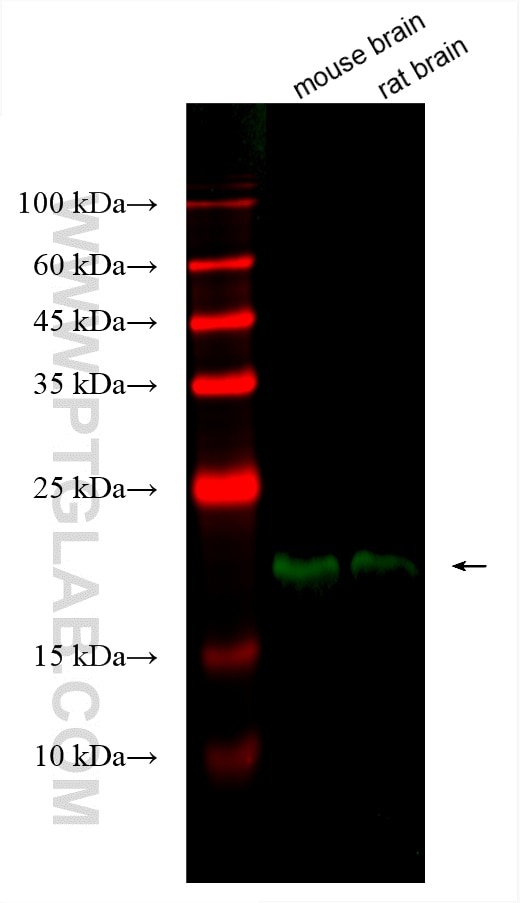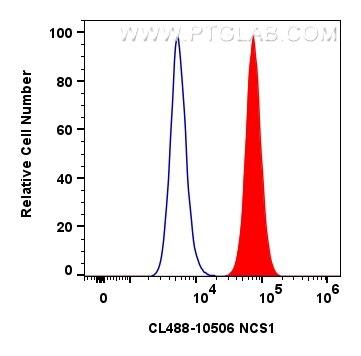Tested Applications
| Positive WB detected in | mouse brain tissue, rat brain tissue |
| Positive FC (Intra) detected in | SH-SY5Y cells |
Recommended dilution
| Application | Dilution |
|---|---|
| Western Blot (WB) | WB : 1:500-1:1000 |
| Flow Cytometry (FC) (INTRA) | FC (INTRA) : 0.80 ug per 10^6 cells in a 100 µl suspension |
| It is recommended that this reagent should be titrated in each testing system to obtain optimal results. | |
| Sample-dependent, Check data in validation data gallery. | |
Product Information
CL488-10506 targets NCS1 in WB, FC (Intra) applications and shows reactivity with human, mouse, rat samples.
| Tested Reactivity | human, mouse, rat |
| Host / Isotype | Rabbit / IgG |
| Class | Polyclonal |
| Type | Antibody |
| Immunogen |
CatNo: Ag0784 Product name: Recombinant human FREQ protein Source: e coli.-derived, PGEX-4T Tag: GST Domain: 1-190 aa of BC004856 Sequence: MGKSNSKLKPEVVEELTRKTYFTEKEVQQWYKGFIKDCPSGQLDAAGFQKIYKQFFPFGDPTKFATFVFNVFDENKDGRIEFSEFIQALSVTSRGTLDEKLRWAFKLYDLDNDGYITRNEMLDIVDAIYQMVGNTVELPEEENTPEKRVDRIFAMMDKNADGKLTLQEFQEGSKADPSIVQALSLYDGLV Predict reactive species |
| Full Name | frequenin homolog (Drosophila) |
| Calculated Molecular Weight | 22 kDa |
| Observed Molecular Weight | 22 kDa |
| GenBank Accession Number | BC004856 |
| Gene Symbol | NCS1 |
| Gene ID (NCBI) | 23413 |
| RRID | AB_3672448 |
| Conjugate | CoraLite® Plus 488 Fluorescent Dye |
| Excitation/Emission Maxima Wavelengths | 493 nm / 522 nm |
| Form | Liquid |
| Purification Method | Antigen affinity purification |
| UNIPROT ID | P62166 |
| Storage Buffer | PBS with 50% glycerol, 0.05% Proclin300, 0.5% BSA, pH 7.3. |
| Storage Conditions | Store at -20°C. Avoid exposure to light. Stable for one year after shipment. Aliquoting is unnecessary for -20oC storage. |
Background Information
NCS1 is a member of the neuronal calcium sensor gene family. It regulates G protein-coupled receptor phosphorylation in a calcium-dependent manner and can substitute for calmodulin. The protein is associated with secretory granules and modulates synaptic transmission and synaptic plasticity.
Protocols
| Product Specific Protocols | |
|---|---|
| FC protocol for CL Plus 488 NCS1 antibody CL488-10506 | Download protocol |
| WB protocol for CL Plus 488 NCS1 antibody CL488-10506 | Download protocol |
| Standard Protocols | |
|---|---|
| Click here to view our Standard Protocols |






